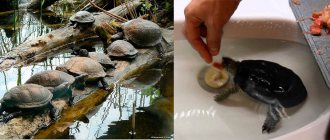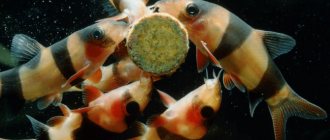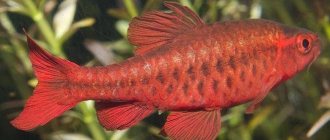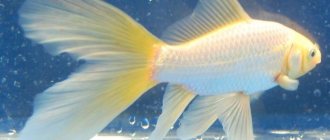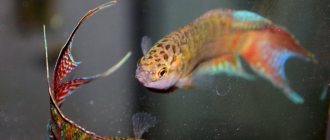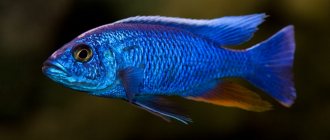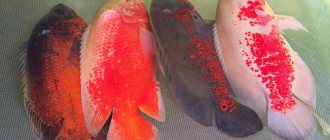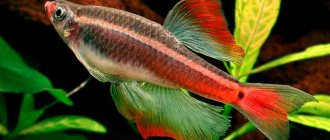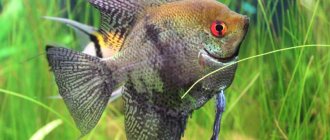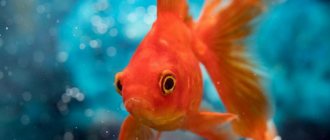Home › Terrariums and inhabitants ›
( 6 ratings, average: 4.00 out of 5)
Axolotls are fascinating creatures that are endangered. Axolotls or Mexican salamanders, native to the remains of Lakes Xochimilco and Chalco in Mexico. Lake Chalco no longer exists, it has been completely drained, and Lake Xochimilco is on the verge of extinction. These animals spend their entire lives in water and never appear on land. These terrarium animals are very low maintenance and, if properly maintained, are quite hardy. It is difficult to imagine a more unusual animal species than the axolotl.
In Ukraine, you can purchase an axolotl from other hobbyists via the Internet. Due to the peculiarities of the temperature regime of their detention, axolotls are not kept with other amphibians.
Most axolotls grow up to 20 cm in length (the distance from the tip of the nose to the tip of the tail). Very rarely they reach 25 cm in length. Puberty usually begins when they reach 16 cm, usually around 1 year of age. The lifespan of an axolotl is most often 10 years, although there are rare cases where they have lived up to 20.
Content
Water
Axolotls should not be kept in very soft, much less distilled, water. Keeping them in hard water is recommended so that they can maintain the integrity of their skin, which protects them from infections. Using ordinary tap water, it must first be purified from the chlorine it contains. This can be done by settling the water (which does not always help) or by using commercial products (conditioners such as Avera). Maintain pH in the range from 6.5 to 8.
If the pH level drops too much, this may indicate an increased content of organic toxic substances in the water, such as ammonia/ammonium and their breakdown products nitrites, which is very dangerous for animal health. In this case, it is necessary to do a water change.
Content
Glass or plastic containers are suitable for keeping axolotls. Axolotls can be kept in groups, 3-4 individuals in a container 25 cm x 46 cm x 15 cm, provided that the animals are completely immersed in water, the aquarium has a good filtration system, and the water is changed frequently. If axolotls were bred for breeding, then it is better to keep the male separately - then his productivity will be better. Females are equally productive both when kept separately and in groups.
Although the above conditions are sufficient, in home aquariums they usually keep a pair of adult axolotls in a 35-40 liter aquarium. Sand or very fine soil can be used as soil. Axolotls love to swallow pebbles, especially those the size of a pea, and although the stones will eventually be removed from the body, it is still better to be on the safe side to avoid possible problems. Having a filter is highly desirable. If you use filters for mechanical, biological and chemical water purification in a container with axolotls, then set the flow to a minimum.
An aquarium is a closed system in which the results of the axolotl’s vital activity, or, more simply put, waste, will constantly accumulate. To keep the water clean and avoid infections, do regular water changes, 25-50% of the volume weekly.
Keep container away from direct sunlight.
Small larvae are very difficult to raise in a community aquarium, since adults can be aggressive towards them and prone to cannibalism. However, adolescent axolotls and adults get along quite peacefully.
In an aquarium with an axolotl, you should not use constantly circulating water (flow), it is enough to do regular partial water changes. Moreover, constantly circulating water causes stress in these animals. If you do use a flow, make the flow of water as slow as possible. Axolotls do not need a large volume to swim - even in a large aquarium, they spend most of the day lying motionless almost at the bottom of the tank.
If you watch an axolotl for a long time, you can see how it periodically moves its gills. In this way, it disturbs the water around them and disperses the carbon dioxide accumulated in the gills, while providing an influx of fresh, oxygenated water. Periodically, the axolotl floats to the surface and swallows air through its mouth.
The holding container should be kept clean, removing possible bacterial growth on the walls of the aquarium or plastic container. If the container is not cleaned regularly, axolotls will suffer from sores on their toes and legs that will not heal. The skin on your feet and toes peels off, dies, and may be shed. If this happens, place the axolotl in a separate container of water to which a few drops of merbromine (disinfectant) have been added until the water turns a pale orange color. Change the water regularly until the axolotl's skin heals and the toes are likely to recover.
Axolotl larvae are usually placed in a separate container, for example a glass bowl 20 cm in diameter. There can be up to 50 or more small larvae in such a bowl, but as they grow, they need to be gradually resettled in different containers. The growth rate of larvae depends on the water temperature, feeding frequency and the number of animals in the container. On average, they should grow to 2 cm in 1.5 - 2 months. All larvae never grow evenly, so when spreading you should try to place larvae of the same size together, otherwise the larger ones may try to feed on the smaller ones. In any case, small axolotls often lack fingers or even limbs because the young often grab and bite anything that moves. Therefore, it is better to place grown individuals 2 cm each in a separate container up to 1 liter in size, but try to cover it or the edges should be higher so that they do not jump out. In any case, axolotls are capable of regenerating, so bitten off fingers and toes will recover very quickly.
Temperature
Axolotls prefer cool water. In their native habitat, the temperature rarely rose above 20°, and in winter it could drop to 6-7°. The optimal temperature for keeping them is 15-18°C, but do not allow the temperature to rise above 22°C. Too high a water temperature is harmful to your axolotl and never place it in direct sunlight.
Description
So, an axolotl is a salamander larva, which, bypassing all the intermediate stages, becomes an adult without changing shape, but purely by age of development. In mature larvae, the average body length is about 300 mm. On both sides of the axolotl's head, long processes (3 pieces each) grow, which serve as external gills.
They create an “image” for the salamander larva - thanks to these gills, the amphibian really looks like a baby dragon (but a rather cute one). In nature, axolotls are found in different colors: black and gray, brown and brown. There are pure albinos and golden ones, but with such coloring it is difficult to survive in the harsh world of the water elements. But in an aquarium, amphibians of light colors will feel more comfortable.
It is difficult to say reliably how long axolotls live in a natural reservoir, but at home this representative of salamanders lives no more than 12 years.
Feeding and regular care
In their natural environment, axolotls fed on small fauna: snails, worms, crustaceans, small fish, and daphnia. In captivity, larvae are fed brine shrimp, and adults are fed granulated food.
For larvae, it is advisable to change the water before each feeding. To do this, you need to drain the larvae into a net or onto a net, thoroughly wash the container with a solution of soda and salt, add fresh water and return the larvae back.
Newly hatched axolotl larvae can be fed brine shrimp nauplii grown in salt water. When the larvae grow to 4 cm, they can begin to be fed with granulated food containing fish and vitamins.
Young larvae are very susceptible to diseases, so they get sick often and are very difficult to treat. To avoid this, you need to change their water and clean the container more often, and also avoid overcrowding.
In general, you can change the water daily for both larval and adult axolotls, this helps avoid the accumulation of ammonia and metabolic waste. During a water change, the axolotl can be placed in a net and left without water. Axolotls can safely remain without water as long as their skin is moist. But don't leave it out of water for too long or allow the axolotl's skin to dry out or become "sticky."
If adult axolotls are kept in a group in a large container, then after draining the water, you should “vacuum” the soil with a siphon to clean the aquarium, removing any remaining food and feces from the bottom of the container. Once a month, it is advisable to place the axolotls in a temporary container and wash the walls of the aquarium from possible bacterial growth.
Axolotl larvae up to 15 cm in length should be fed once a day. Axolotls from 1 year of age can be fed 3-4 times a week. In addition to pellets, adult axolotls can be fed with daphnia, bloodworms and other mosquito larvae, earthworms (this is their favorite treat), food for guppy or goldfish, trout pellets, beef liver or heart. If you feed raw fish, you need to be sure it is free of parasites - avoid fish species that are prone to parasites.
Axolotl colors
These cute and funny creatures can be colored differently by Mother Nature. The coloring depends on the population (or artificially bred line), as well as on the conditions in which the larva lives. Including food. Axolotls are usually divided into 3 types of color.
- “Prirodniki” is black or simply dark (gray, brown, brownish, marsh) color with spots. The pattern on the body can be different: small, large, reminiscent of a mesh.
- White, but not albino - the light color in adulthood is complemented by a patterned pattern along the back. An amphibian may not necessarily be pure white; pinkish and beige shades are often found. The gill filaments are not red, but deep pink. Eyes black or brown.
- "Albs" - without pigment. Completely white, without spots or patterns, with bright red gill processes and eyes. Among albinos there is also a golden color.
This is interesting! As a result of crossings, axolotls are produced in a wide variety of colors. Scientists experimenting with GMOs have achieved that under a fluorescent lamp the larvae's spots and stains on its body glow.
Natural and white axolotls come in a wide variety of colors and patterns, especially those that have been bred at home or in a laboratory. In their natural environment, darker colors predominate because light-colored individuals are more vulnerable to predators and survive less well.
Breeding
Adult females are usually larger and “plump” because they are filled with eggs. Puberty occurs at about one year of age. For mating, a pair of healthy sexually mature individuals is selected and placed in a plastic container. There should be enough water to completely cover the animals. The bottom should not be smooth like glass, but slightly rough, or you can place rough cobblestones on the bottom. Cover the container and leave the animals alone. The male begins to court the female, nudging her with his muzzle. During this mating dance, the male leaves his seed on the bottom or rocks, and the female collects it with her cloaca. Check a few hours or a day later to see if the male has left his spermatophores in the water and on the rocks. If so, the male can be removed.
The female usually begins to lay eggs 12-20 hours after mating. After the female lays her eggs, she needs to be removed. Females rarely eat their eggs, but they can eat hatched larvae.
The female can be used for spawning once every 2-3 months, and the male once every 1-2 weeks. It is impossible to predict whether the pair you have chosen will have guaranteed spawning, but usually every second or third attempt is successful. Daylight hours for successful spawning are crucial; the longer it is, the greater the chances of its successful completion. Usually 14 hours of daylight is sufficient. Axolotls usually spawn all year round, although they may be less productive during some periods.
Caviar care
Axolotl eggs are encased in a transparent, gelatinous membrane that protects them from bacterial infection. After spawning, place the embryos in a separate container, removing any stuck or crushed eggs. Embryos are stored for 2-3 weeks at room temperature until the larvae hatch. Most larvae hatch on their own, but if they fail, you can help them remove the capsule with tweezers. Carefully remove the discarded capsules using a pipette. You can start feeding the larvae after the yolk in their bellies disappears.
Choosing an aquarium by size
One of the main criteria for choosing a container is its size. Let's proceed from the fact that individuals are usually purchased for home keeping at the age of two to three months.
It is during this period of time that amphibian larvae can grow stronger, weak individuals die, and those capable of independent life pass into the hands of future owners.
When amphibian larvae are about two to three months old, their body size is still quite small. Usually the length of the body including the tail reaches eight to ten centimeters from the top of the head to the very end.
Remember that your pets should not be cramped. However, you should not initially purchase a container that is too large, since it is more labor-intensive to maintain and will require greater financial costs in the future.
However, you should not purchase a small aquarium, since axolotls grow quite quickly, and by the age of one year, an adult male amphibian can reach a length of 30–45 cm.
Who does he get along with?
It is extremely difficult for the aquarium dragon axolotl to find suitable neighbors. Experts recommend keeping them in separate species aquariums for the following reasons:
- Even the most peaceful ornamental fish can damage their outer gill processes. This leads to infection, suppuration and long-term illness.
- A comfortable environment for dragons is not suitable for most fish.
- Small fish that cannot harm the salamander become food for it.
The only people an axolotl can get along with are goldfish. Slow and calm, they do not show interest in salamanders, and they, in turn, cannot eat such large neighbors.
But the best option for sharing with an axolotl is another axolotl. However, even with this option, certain conditions must be met:
- Pets must be the same age and size. If this rule is not followed, the smaller dragon runs the risk of being eaten by its relative.
- Plenty of food. To eliminate the possibility of cannibalism.
- Enough space to prevent territorial aggression.
Squid
Laying out the soil
Choosing a substrate is an important stage in how to set up an aquarium, because a lot in the aquatic environment depends on the type of substrate. The most popular and convenient types of soil are sand or gravel, which contribute to the natural design of the pond and are easy to clean when dirty. You can buy soil in a specialized store, or get it yourself in nature. Before placing the soil for plants in the tank, the selected soil is treated by rinsing well in running water and calcining in an oven to get rid of bacteria and dirt. If the soil was purchased in a store, it must also be thoroughly washed.
What does he like to eat?
In its natural environment, the axolotl feeds on larvae, fry and insects that fall into the water.
They eat salamanders and small aquarium fish: guppies, zebrafish, neonfish and rasboras.
Live food includes small amphipods, daphnia, cyclops, corertra, and tadpoles. You can feed your axolotl bloodworms.
In addition to the above, the amphibian's diet can be varied by wingless insects, crickets, slugs and snails, freed from their shells.
You should know that you cannot use regular food for aquarium fish. It is forbidden to feed the axolotl and red meat to warm-blooded animals, since its digestive system does not digest this type of protein.
Habitat in nature
Translated from the ancient Aztec language, axolotl means water monster. The homeland of axolotls is the ancient system of water canals and lakes in Mexico City. They live their entire lives in the water, never moving onto land. They prefer deep places in canals and lakes, with abundant aquatic vegetation, as they depend on aquatic plants. They live in Lakes Xochimilco and Chalco in Mexico, however, as a result of rapid urbanization, their range is shrinking. Lake Chalco no longer exists, having been drained as a result of flood control measures, and Lake Xochimilco remains a shadow of its former self, existing as canals.
As of 2010, wild axolotls were close to extinction due to urbanization in Mexico City and subsequent water pollution, as well as the introduction of invasive species such as tilapia and snapper. These new fish ate baby axolotls and also became competitors in the food poverty.
They are listed as critically endangered in the wild, with declining populations. Axolotls were also sold as food in Mexican markets and before the Spanish invasion, they were eaten by the Aztecs, the meat was considered medicinal, and the taste was similar to eel.
Fortunately, they reproduce quite easily in captivity, and are also of scientific value due to their ability to regenerate gills, tails and even limbs. The study of this feature has led to the fact that there are quite a lot of them in captivity, and many color forms have been bred.
Their habitat is similar to that of most neotenic species—a high-altitude body of water surrounded by a hazardous terrestrial environment. The axolotl is carnivorous, consuming small prey such as worms, insects and small fish in the wild. Axolotls find food by smell and "attack" any potential food by sucking the food into their stomachs using a vacuum.
During the breeding process, they attach eggs to aquatic plants and then fertilize them. Lake Xochimilco is famous for its floating gardens or chinampas, essentially strips of land between canals where locals grow vegetables and flowers. Axolotls live in this ancient system of irrigation canals and lakes.
Axolotls are listed in the Red Book as a species of amphibian under threat of extinction. Since their habitat is 10 square kilometers, and also very scattered, it is difficult to establish the exact number of individuals living in nature.
Diseases
The axolotl will get sick if you make mistakes in feeding it. Possible diseases:
- Intestinal obstruction. It develops in an animal when it ingests grains of sand or gravel particles. The animal stops eating and rapidly loses weight. It is necessary to show the amphibian to a veterinarian, because even surgical intervention may be required.
- Pathology of cartilage tissue. Occurs due to a lack of vitamin D and calcium. The axolotl becomes lethargic and inactive, the body swells.
- Anorexia. The reason may lie in a monotonous diet or infectious diseases. The axolotl stops eating and begins to bloat. To improve the condition of the animal, you need to feed it with granulated flower pollen and crushed egg yolk.
- Ascites. Occurs due to metabolic disorders caused by poor quality water. It is characterized by lethargy of the animal, apathy, bloating and lack of appetite.
An axolotl with any pathology must be separated from its relatives and shown to a specialist.
Axolotl conservation
Photo: Axolotl Red Book
For protection purposes, it is listed in the International Red Book and CITIES. Amphibians have been assigned endangered species status. Scientists suggest that in order to preserve the number of amphibians, it is necessary to create nurseries in which to raise and breed these animals. This is the only way to preserve the species and increase its numbers. Employees of a Mexican research institute are making attempts to create such a national park. In the natural habitat region, trapping is officially prohibited.
Zoologists say that a large number of amphibians live in captivity. If you create optimal conditions for them that are as close to natural as possible, they feel quite comfortable and even reproduce. In order to increase the number of water dragons, employees of a Mexican research institute successfully breed them in aquarium conditions and release them into lakes. Another measure to protect and protect these representatives of the Ambystomaceae family is to minimize human impact on their natural habitat. The cessation of pollution of natural water bodies, according to scientists, leaves a chance for a gradual increase in the number of amphibians, a decrease in morbidity and mortality.
The axolotl is an amazing representative of flora and fauna that is on the verge of extinction. It really has an external resemblance to dinosaurs that went extinct many millennia ago. This quality, as well as intelligence, intelligence and cunning, contributes to the increasing spread of aquarium keeping of water dragons.
Key Features
The predator axolotl is motionless most of the time. He, as he does for hunters, waits for his prey: a gaping snail or a worm.
It takes 2-3 days for him to digest food.
The ability to renew himself in this way is a vital necessity for him.
Cute kids have a bad habit of biting off each other's paws. So the larvae learned to regrow lost limbs and organs.
The whole process follows the same scheme:
- the end of the stump is rounded:
- the damaged limb takes on a conical shape;
- the foot is constantly growing, a flipper is formed;
- finger rudiments are formed.
Scientists are studying this phenomenon. Perhaps, over time, the axolotl will teach people how to restore their arms and legs.
And today he often has to sacrifice himself for the sake of science. Most populations live in laboratories.
Natural enemies of axolotls
Photo: Amphibian axolotl
Many reasons contributed to the decline in axolotl numbers. One of them is the destruction of natural habitats and pollution of water sources. Changing climatic conditions, warming and rising water temperatures cause death and numerous diseases of amphibians.
The second significant reason for the decline in numbers is diseases, to which salamanders are very susceptible. They tend to suffer from very serious diseases that cause death: ascites, anorexia, metabolic disorders, hypovitamnosis, intestinal obstruction, digestive disorders, etc.
Humans played a major role in the status of the population. Amphibians were caught in huge quantities for the purpose of conducting experiments and research on the regeneration of lost organs and limbs. In addition, human activity contributes to the pollution of natural water bodies. Crystal clear lake water becomes dirty. This leads to sickness and death of water dragons, as they react very strongly to water quality.
In addition, larger and more predatory fish hunted axolotls: telapia, carp. They eat large quantities of not only the amphibians themselves, but also their eggs, which thus do not have time to turn into fry.
